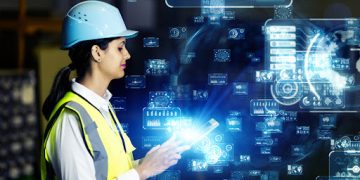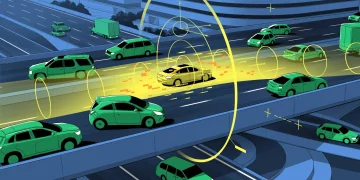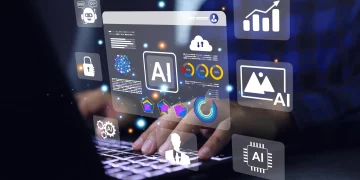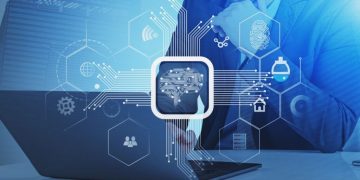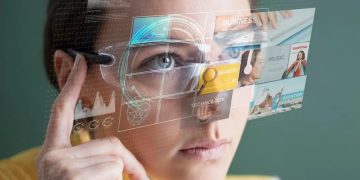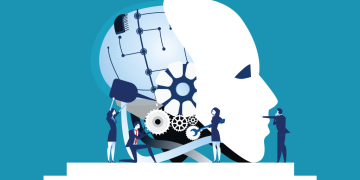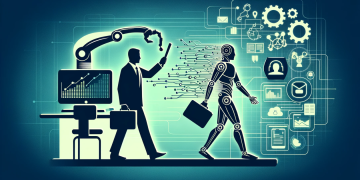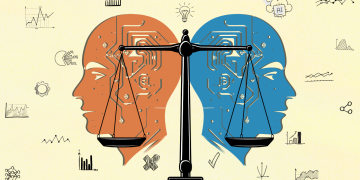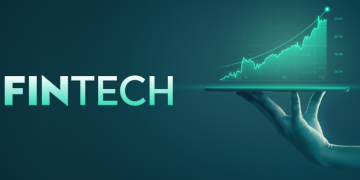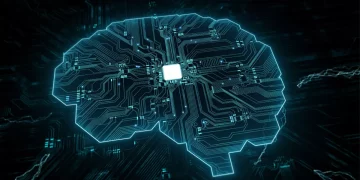The manufacturing industry, a cornerstone of global economies, has undergone profound changes over the past few decades. With the rise of new technologies such as Artificial Intelligence (AI), the manufacturing sector has seen significant transformations. AI, with its power to process vast amounts of data, automate processes, and optimize decision-making, has revolutionized how manufacturers operate. By 2025, AI-driven solutions are at the heart of manufacturing processes, from production lines to supply chain management, and everything in between.
This article delves into the advancements AI has brought to manufacturing, highlighting key innovations and real-world case studies that demonstrate how AI has improved automation, quality control, maintenance, and efficiency in manufacturing settings.
1. AI-Driven Automation: Revolutionizing Production Lines
AI’s most significant impact in manufacturing has been in the realm of automation. In 2025, AI technologies such as machine learning, computer vision, and robotics have become integral components of manufacturing lines. These AI-driven systems allow for more efficient production processes, reduced errors, and faster time-to-market for products.
Robotic Process Automation (RPA)
One of the key advancements in manufacturing automation is the widespread adoption of robotic process automation (RPA). Robots, powered by AI, have taken over repetitive and dangerous tasks, allowing human workers to focus on more complex and creative aspects of production. RPA has also enabled manufacturers to work around labor shortages and rising wage costs by increasing productivity while ensuring worker safety.
Case Study: Tesla’s Gigafactory
Tesla’s Gigafactory in Nevada serves as a prime example of AI-driven automation. The factory uses AI-powered robots to handle everything from assembling battery cells to managing inventory. The robots on the production line work in sync with human workers, performing tasks like welding, part assembly, and material handling. By implementing AI-driven automation, Tesla has significantly reduced the time it takes to manufacture electric vehicles, boosting production capacity and reducing costs.
AI in Customization and Flexible Manufacturing
As consumer demands for customized products increase, AI is helping manufacturers achieve greater flexibility in production. AI-driven systems can adapt production lines in real-time to handle different products or varying batch sizes. This flexibility enables manufacturers to produce bespoke items without sacrificing efficiency.
Case Study: BMW’s AI-Powered Flexible Manufacturing System
BMW has implemented AI to optimize its flexible manufacturing system, which allows the company to efficiently produce a wide variety of car models on the same production line. AI algorithms analyze data from the entire production process to dynamically adjust machine settings, ensuring that each car is built to specification without slowing down production. The system’s ability to handle different models simultaneously improves overall productivity while meeting consumer demand for variety.
2. AI in Predictive Maintenance: Reducing Downtime and Costs
Another area where AI is making a significant impact is predictive maintenance. Traditional maintenance approaches often rely on scheduled checks or reacting to equipment failures, which can result in costly downtime and inefficiencies. AI has transformed this process by enabling manufacturers to predict when machines will require maintenance before they break down.
Machine Learning and Sensor Data for Predictive Maintenance
AI systems are equipped with sensors that continuously monitor machine performance. These sensors collect data on factors such as temperature, vibration, and pressure. AI algorithms analyze this data to detect patterns that may indicate a potential failure, allowing maintenance teams to address issues before they lead to costly breakdowns.
Case Study: General Electric’s (GE) Predix Platform
General Electric’s Predix platform is a leading example of how AI is used in predictive maintenance. GE’s AI-powered platform collects and analyzes data from industrial machines, identifying early signs of wear and tear. This allows businesses to perform maintenance only when necessary, minimizing downtime and reducing the costs associated with unnecessary repairs. The use of predictive maintenance has helped companies across industries like oil and gas, aviation, and manufacturing to extend the life of their machinery and improve overall operational efficiency.
AI-Optimized Supply Chains: Minimizing Interruptions
Predictive maintenance doesn’t only apply to machinery but also extends to the entire supply chain. AI tools predict potential disruptions and allow manufacturers to make proactive adjustments. For instance, if AI identifies that a specific part is prone to failure, it can trigger the procurement of spare parts ahead of time, preventing potential production delays.
Case Study: Siemens’ AI for Supply Chain Optimization
Siemens has integrated AI into its supply chain management to ensure smooth production workflows. By analyzing historical data and real-time information, Siemens’ AI system forecasts potential disruptions in the supply chain, such as transportation delays or raw material shortages. This enables Siemens to take corrective actions, such as adjusting inventory levels or re-routing shipments, ensuring that production continues without interruption.

3. AI in Quality Control: Enhancing Precision and Reducing Defects
Quality control is critical to the manufacturing process. Defective products can lead to increased waste, reduced customer satisfaction, and higher costs. Traditional quality control methods, such as manual inspection, are prone to human error and inefficiency. AI-powered quality control systems are changing the game by increasing precision, speed, and consistency.
Computer Vision for Automated Inspection
AI-driven computer vision systems have become widely used in quality control. These systems use cameras and sensors to inspect products at every stage of production, identifying defects or inconsistencies. The system then flags any defective products for removal from the production line, ensuring that only high-quality items reach consumers.
Case Study: Intel’s Use of Computer Vision for Quality Control
Intel, one of the world’s leading semiconductor manufacturers, uses AI-powered computer vision to inspect its microchips during production. The AI system scans each chip for imperfections such as cracks, scratches, or surface defects, achieving a level of precision and consistency that is impossible with human inspectors. This automated inspection process has significantly improved Intel’s quality control, reducing the number of defective products and ensuring that only the highest quality chips are shipped to customers.
AI-Enhanced Data Analytics for Process Improvement
Beyond product inspection, AI is also used to analyze data from production processes to identify areas for improvement. Machine learning algorithms can detect inefficiencies or patterns that lead to defects, allowing manufacturers to optimize processes and improve product quality over time.
Case Study: Coca-Cola’s AI for Process Optimization
Coca-Cola has implemented AI in its manufacturing facilities to monitor and optimize production processes. The AI system analyzes data from various sources, such as equipment sensors and environmental conditions, to identify inefficiencies that may lead to product defects. By using AI to optimize processes, Coca-Cola has improved its quality control, reduced waste, and minimized defects in its production lines.
4. AI-Driven Supply Chain Optimization: Streamlining Operations
Manufacturers are increasingly turning to AI to streamline their supply chains. The integration of AI with supply chain management allows manufacturers to reduce inefficiencies, minimize costs, and improve delivery times.
AI in Demand Forecasting
AI’s ability to analyze vast amounts of historical data and predict future trends has become a game-changer in demand forecasting. AI algorithms can analyze consumer behavior, market trends, and economic indicators to predict the demand for products with greater accuracy. This helps manufacturers adjust production schedules, inventory levels, and supply chain logistics to meet demand without overstocking or running out of critical materials.
Case Study: Unilever’s AI-Powered Demand Forecasting
Unilever has implemented AI to optimize its demand forecasting, ensuring that its factories produce the right quantity of products at the right time. By analyzing sales data, market trends, and consumer behavior, Unilever’s AI system can predict future demand with a high degree of accuracy. This allows Unilever to adjust production schedules, reducing the risk of overproduction and minimizing the cost of unsold inventory.
AI in Logistics and Distribution
AI is also used to optimize logistics and distribution, helping manufacturers streamline their operations and improve the efficiency of supply chain management. AI-driven systems can analyze real-time data on traffic conditions, weather, and inventory levels to recommend the most efficient routes and delivery schedules.
Case Study: Amazon’s AI-Driven Warehouse Automation
Amazon’s warehouses are a prime example of how AI is transforming logistics and distribution. The company has deployed AI-powered robots to manage inventory, fulfill orders, and optimize warehouse operations. These robots work alongside human employees, picking and packing products at lightning speed. By using AI to automate these tasks, Amazon has significantly reduced order fulfillment times and improved supply chain efficiency.
5. Challenges and Future of AI in Manufacturing
While AI has brought numerous benefits to manufacturing, the adoption of AI technologies also presents challenges. Manufacturers must invest in advanced infrastructure, retrain workers, and address concerns related to data security and privacy. Additionally, there is the question of how AI-driven automation will impact the workforce, as some jobs may become obsolete.
Nevertheless, as AI continues to evolve, its potential to drive even greater efficiencies and innovations in manufacturing is limitless. In the future, we can expect AI to be even more integrated into every aspect of manufacturing, creating smarter, more agile factories that can adapt to market changes in real time.
Conclusion: A New Era in Manufacturing
AI has already transformed the manufacturing sector in profound ways, and by 2025, its influence will be even more significant. From automating production lines and improving maintenance processes to optimizing supply chains and ensuring product quality, AI is reshaping every facet of manufacturing. As companies continue to adopt AI-driven solutions, the manufacturing industry will become faster, more efficient, and more adaptable to changing market demands.

